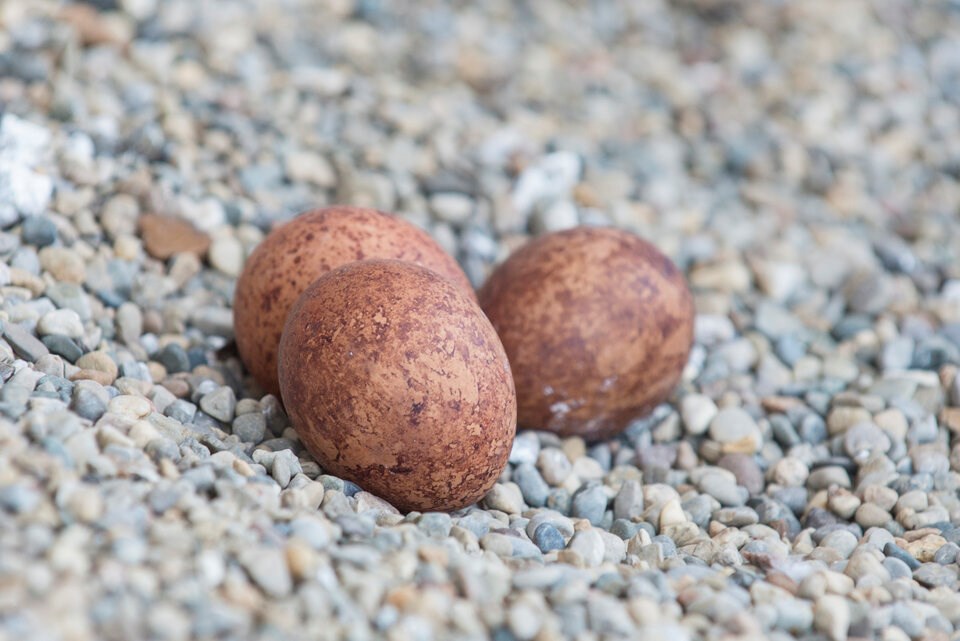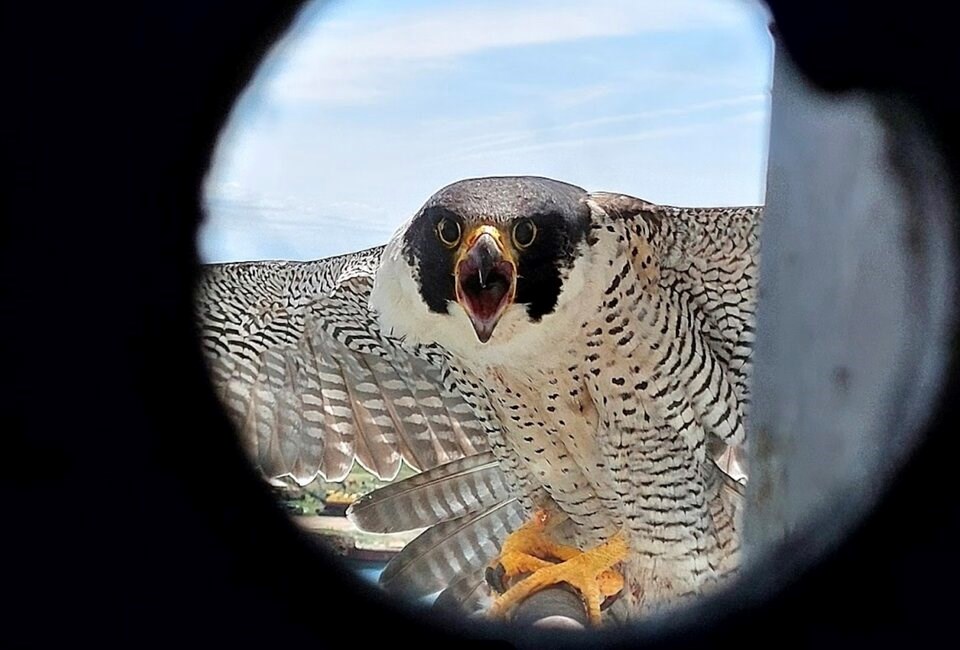Peregrine falcons are laced with higher levels of toxic flame retardants than any animal in North America — possibly more than any in the world — decades after the banned chemicals were phased out, a new study has found.
The , published in the journal Environmental Science & Technology this month, traced levels of halogenated flame retardants, including polybrominated diphenyl ethers (PBDEs) and hexabromocyclododecane (HBCDDs), in the apex predator between 1984 to 2016. Over those three decades, unhatched falcon eggs were sampled in B.C., California, Ontario, Quebec, New Brunswick, New Jersey, Chesapeake Bay and Pennsylvania at a time when the legacy chemicals were phased out around the world.
Robert Letcher, a senior research scientist with Environment and Climate Change Canada and a co-author on the study, said PBDE levels in fatty polar bears range from 50 to 100 parts per billion. In killer whales, which have an inferior ability to metabolize the compounds, he said PBDE levels tend to range between two to 5,000 parts per billion.
“These peregrines have five to 10,000 parts per billion in their eggs,” said Letcher. “They are really high compared to other species.”
Past studies have suggested regulation of the flame retardants has led to the chemicals' steep decline in aquatic ecosystems. But for terrestrial animals, and especially peregrine falcon eggs, the study found concentrations of the toxic compounds have remained remarkably consistent over time, especially near urban centres.
When Kim Fernie, also a senior research scientist with Environment Canada and a co-author on the study, saw the numbers for the first time, she remembers thinking “Wow! This is alarming.”
“This apex predator has some of the highest concentrations of flame retardants, even historical ones, that have been regulated in Canada and elsewhere,” she said. “They do accumulate across the food web.”

'A cause for concern'
Some of the earliest detections of PBDEs in wild animals came in the mid-1960s when Swedish scientists found the compound in eagles. Despite that finding, the flame retardants were too valuable a component for industry to pass up, and the chemicals were laced into nearly every part of the human environment over the following decades.
It wasn’t until decades later that scientific evidence raised enough alarm that the toxic chemicals were phased out. By then peregrine falcons had become a species that “set off alarm bells” about the use of DDT, an insecticide that thinned their eggs, leading to global population crashes, said Letcher.
But the story didn’t stop at DDT. A bird of prey known for being the fastest animal on the planet, falcons are at the top of the bird food chain. By hunting a variety of other animals — from songbirds and geese to bats and rats — they accumulate legacy chemicals after every kill. An ideal sentinel species, Letcher said the high levels of flame retardants in the birds show just how good the predator is at reflecting its own environment.
“We see these chemicals of interest including the flame retardants are going up through the food chain, and now they've hit the apex predators, the top of the food chain, which is the same equivalent as us. That is a cause for concern,” said Fernie.

Scientists found early generation halogenated flame retardants messed with an animal’s thyroid system, which regulates growth, development and metabolism. In birds, PBDEs throw their hormones out of whack and can lead to thinner egg shells, or chicks that are either much smaller or much larger than normal, said Fernie.
“Anything that's not average is bad for a wild bird. If they're too big, they might require more food than the parents are able to deliver for them. If they're too small, then they have problems handling inclement weather,” she said.
While banned, the chemicals never truly went away. Unlike their endocrine-disrupting cousins — a group fo 4,700 substances known for their role in everything from non-stick cookware pans and rain jackets — PBDEs are not considered “forever chemicals.”
But the ability of the compounds to and their near endless supply means it could be generations before long-lived chemicals truly go away.
Contamination found everywhere
Fernie said it’s not clear exactly where the chemicals are coming from, but some worrisome sources include landfills or when an old building is demolished. Past studies have documented lake sediment filled with old fire retardant chemicals getting churned up by some human activity. That has led to spikes in some bird species, Letcher said.
The latest 30-year study, carried out by Fernie, Letcher and their colleagues from the United States and China, was on a larger scale and longer timeline than anything any scientist tracking the fire retardant chemicals has attempted.
In some cases, Fernie said she worked with people from the Alpine Club of Canada to rappel off cliffs and collect unhatched eggs. She said she has taken samples in the City of Ottawa and from skyscrapers in downtown Toronto. One egg under a bridge in Montreal was found to have one of the highest concentration of HBCDD — a fire retardant primarily used as thermal insulation in construction — found in any living thing.
Many of the samples they tested had been collected years earlier around the Great Lakes or in places like Langara Island, off the northwestern tip of Haida Gwaii. They only remained available through the National Wildlife Research Centre, Canada’s only wildlife specimen bank housed at Carleton University in Ottawa.
Remarkably, said the scientists, even samples found in far flung corners of North America told a similar story — legacy chemicals that have been woven through nearly everything built by humans are taking a long time to go away.

A perpetual source of contamination, the flame retardants are woven through nearly every built environment, in our houses, furniture, computers and cars. Fernie said she’s even wondered if in pulling falcon eggs off the side of skyscrapers, she was sampling a vaporized piece of the building itself.
“Everything around us is rife with flame retardants,” said Letcher.
In 2020, the government of Canada said PBDEs presented a , something Letcher declined to comment on. By studying contamination of a raptor species, he said “we're kind of delving into the bottom tip of the iceberg.”
“We do have to live with what mess we've created.” he said. “We create things, beautiful things, structures and buildings, but you know, they are kind of a toxic mess. And we have to keep them contained.”
Contamination high point or calm before storm?
Despite the high levels of contamination found in peregrine falcon eggs, the species has seen a remarkable comeback in recent decades and has been removed from endangered species lists.
When asked to make sense of the apparent contradiction — that falcons are thriving amid a toxic soup of chemicals — both Fernie and Letcher said there could be a number of possibilities.
Perhaps the contamination has yet to hit high enough levels of exposure to cause any reproductive effects in the falcons, mused Fernie. Or maybe the last year of their study, eight years ago now, will end up marking a toxic high point, added Letcher.
“Maybe we're seeing the precipice of a decline,” he said.
Correction: A previous version of this story mistakenly referred to PCBEs as a "million-year chemical." That description, in fact, was directed at another group of chemicals known as PCBs. We regret any confusion.
